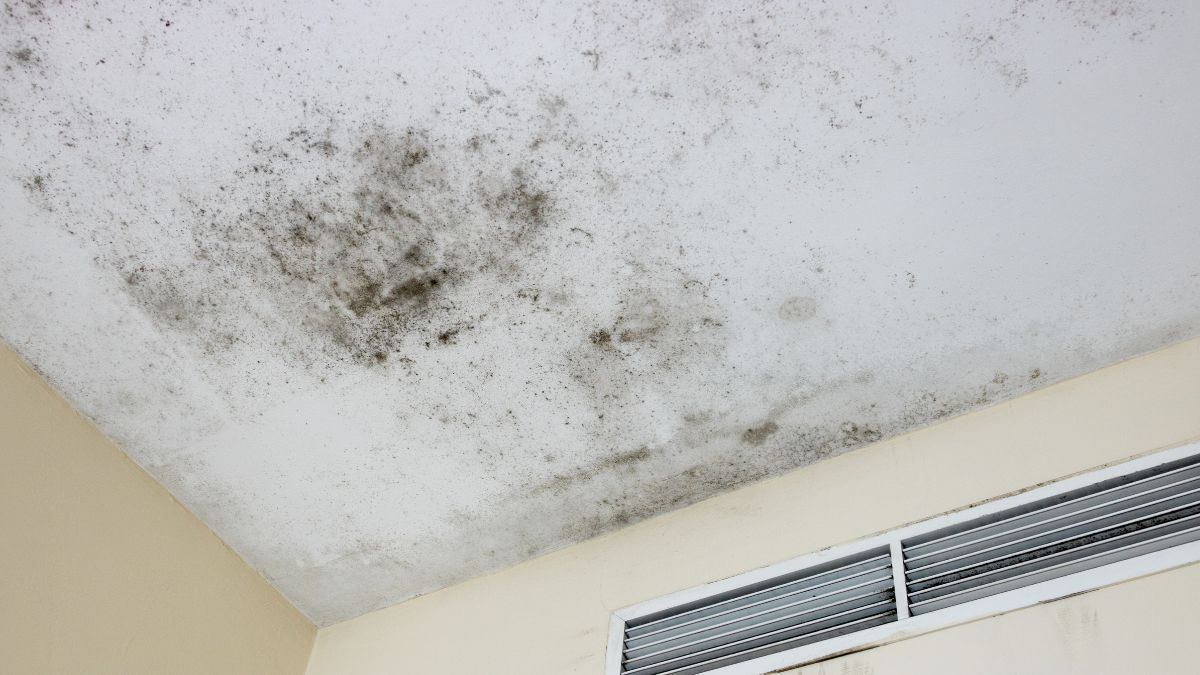
by Mold-B-Gone | Sep 20, 2023 | Mold and Depression, Mold and Infants, Mold Facts
Mold remediation is an indispensable service for ensuring that residential and commercial buildings remain safe and free from the hazardous impacts of mold growth. A common concern among property owners is: Can mold be completely removed from a house?
The straightforward answer is that remediation can drastically reduce mold populations. Yet, it doesn’t entirely eliminate all mold spores from a premise. This often leads to another pressing query: Can mold come back after remediation? Addressing this concern requires a comprehensive understanding of mold growth conditions and the efficacy of remediation procedures.
Triggering Factors for Mold Growth
The principal culprits behind mold manifestation are moisture and inadequate ventilation. Even after a thorough remediation, if the underlying issues leading to moisture accumulation are not rectified, mold can potentially make an unwelcome return. Knowing the answer to whether mold can come back after treatment is a stepping stone toward formulating preventive measures.
Mold exposure, particularly from certain toxic strains, could pose serious health risks to pregnant women and infants. There’s been a notable discourse about the occurrence of mold in everyday items like sippy cups and its potential to adversely affect an infant’s health.
Water Damage Restoration: A Vital Step
Often, the genesis of mold infestation is water damage. Situations like flooding, leakages, or high humidity are breeding grounds for mold. Swift and efficient water damage restoration is pivotal to thwarting mold proliferation. This includes expunging water, drying the affected regions, mending any damage, and resolving the moisture sources.
Preventive Strategies Post-Remediation
Post-remediation, it is imperative to adopt certain preventative strategies to avert mold reoccurrence. Firstly, it’s crucial to identify and rectify all sources of moisture. This could entail repairing leaky plumbing, replacing old appliances, or enhancing ventilation within the premises.
Continuous monitoring of these areas, especially post-remediation, is fundamental to preventing mold resurgence. Keeping the humidity levels within your premises in check can significantly diminish the odds of mold reemergence. This addresses the concern of whether mold will come back after remediation.
Your Path to a Mold-Free Environment
If mold recurrence is a concern, consulting with mold experts in Atlanta is a wise decision. With Mold-B-Gone Remediation, you’re not just getting remediation; you’re investing in a long-term mold-free environment. Our proficient team addresses not only the visible mold but delves deeper to rectify moisture sources, ensuring mold doesn’t find its way back to your premises.
Are you concerned about mold reemergence? Connect with Mold-B-Gone Remediation, where eradication meets prevention, ensuring you a safe, mold-free dwelling. Your peace of mind is just a call away.

by Mold-B-Gone | Aug 17, 2023 | Mold and Depression, Mold and Infants, Mold Facts
The word “mold” is perceived to be in the same category as decay and rot. Objectively speaking, there are thousands of mold species out there. Some are helpful in that they help in the recycling of organic matter. That said, the majority that naturally occur in the home due to dampness or humidity have a negative effect on the body. Their spores produce mycotoxins that are absorbed through the intestines, lungs, or skin. Thus, mold can affect your heart and cause other health issues.
Respiratory Issues and Asthma
Mold may also cause chest pain and respiratory issues. If a person has asthma, mold exposure could worsen the situation and trigger an attack. They might also require an inhaler to manage the symptoms. Research has shown that higher levels of mold within homes could start cases of asthma in school-aged children.
Pneumonitis
Exposure to a significant amount of mold can trigger a severe reaction known as hypersensitivity pneumonitis. That leads to short- or long-term lung inflammation. Common symptoms are headache, cough, and muscle aches. These symptoms last a few days but can resolve if the exposure is eliminated.
Infections
Some people can breathe in mold spores without experiencing health complications. However, those who have respiratory vulnerabilities are at a higher risk of lung infection. These infections may include valley fever, sporotrichosis, histoplasmosis, and aspergillosis. You may be at a higher risk of getting these infections if you have sarcoidosis, cystic fibrosis, tuberculosis, asthma, or HIV.
Heart and Circulatory Issues
Mold can cause heart problems because of the presence of mycotoxins. Mycotoxins from black mold may be breathed in, ingested, or absorbed into the skin. When the exposure is prolonged, these toxins can enter the bloodstream, showing up as blood-related inflammations or infections. Mold can also cause heart palpitations, internal bleeding, heart inflammation, and blood clots. Seek immediate medical attention should you have any of these symptoms. They can quickly become severe, so treatment should be given right away.
Chronic Fatigue
When there is prolonged mold exposure, the immune system produces a sedative called chloral hydrate. It is a defense mechanism against mold in the circulatory system. Unfortunately, some of the negative consequences are chronic fatigue, muscle pain, drowsiness, and joint pain. It can be tricky to catch on to the cause of these symptoms. Once they become apparent, it would be advisable to seek medical help and mold removal assistance immediately afterward.
Treatment
Once you know the mold is causing health problems, consult your medical practitioner immediately. The source of the mold also has to be eliminated. That means hiring a professional remediation team so there is no further exposure to mold spores. It can be costly but ultimately worth it to make you and your family as safe as possible.
Fortunately, Mold-B-Gone specializes in mold removal in Atlanta. If you have any queries, give us a call. We will help sort out any cases of mold in your house or institution.

by Eric Brown | May 22, 2019 | 37 Symptoms Associated With Mold Illness, Can Black Mold Poison You?, Can Mold Kill?, Chronic Fatigue Syndrome (CFS), Chronic Inflammatory Response Syndrome (CIRS), Commercial Mold Remediation, Commercial Mold Removal, Health, Homeowner Tips, How Toxic Is Mold?, Indoor Air Quality, Killing Mold, Mold and Asthma, Mold and Chronic Fatigue Syndrome, Mold and Depression, Mold and Genes, Mold and Infants, Mold and Multiple Sclerosis, Mold and Parkinson's Disease, Mold and Pregnant Women, Mold and Sids, Mold and Sinusitis, Mold Facts, Mold Information, Mold Remediation, Mold Removal, Mold Removal Alpharetta GA, Mold Removal Atlanta GA, Property Damage Restoration, Questions and Answers, Stachybotrys Black Mold
The Link Between Genes and Mold Illness!

The Link Between Genes and Mold Illness!
Mold B Gone specializes in helping mold sensitized individuals.
One of the questions we are often asked is why do some people get sick from mold and other’s do not?
One of the biggest challenges faced by people sick from mold is the fact that doctors, friends, and other family members dismiss their symptoms simply because they do not get sick when exposed to mold.
Many victims of mold sickness are labelled as hypochondriacs and are accused of not being sick at all.
This is tragic because many people that get sick have no control over their sickness because their bodies have a genetic predisposition to mold illness.
The other major problem with mold illness is the fact that there are so many symptoms, 37, associated with it, meaning it is difficult for physicians to pinpoint the cause.
This article explains how your genes impact mold illness and what you can do if you suspect that you suffer from Chronic Inflammatory Response Syndrome (CIRS).
Legal Challenges Faced By Mold Sensitized Individuals

Legal Challenges Faced By Mold Sensitized Individuals
Sickness from mold has been around for decades.
Victims of mold have tried to plea their cases in the courts seeking compensation for the health damages caused by poorly maintained homes and buildings that had water damage and mold.
Unfortunately, many of the plaintiffs lost their battle because the courts did not believe that mold actually makes people sick.
Despite this, data from thousands of contractors working with occupants of water-damaged buildings documented the health challenges that many mold sensitized individuals faced.
According to Erik Johnson, a mold expert and survivor, it was not until the 1990s, that the World Health Organization, acknowledged that “Sick Building Syndrome” could be caused by toxic mold.
Moving forward, finally, it seems that there is greater recognition that mold is in fact the cause of sickness for many. In 2015, the MOLDY documentary featured health professionals and people who have suffered mental and physical health issues after living in moldy homes. This was a ground breaking documentary because it brought the issue of mold and sickness to a much broader audience, thereby creating significant awareness of this issue.
In a presentation at the PLR Expo in Toronto, Canada, in 2015, CEO of Wonder Makers Environmental, Michael Pinto presented “12 Future Trends In The Restoration Industry“.
One of the most notable trends he cites is a “A Tighter Connection Between Medicine and Environment“.
Pinto cites new diagnosing techniques to identify the illness, Chronic Inflammatory Response Syndrome (CIRS) (detailed below), which legitimizes the tie between Water Damaged Buildings (WDB) and sickness. Research has identified a genetic component to this condition (explained below), a screening test (VCS), and most importantly, a treatment regimen.
Other trends Pinto believes demonstrate the important ties between medicine and the environment include the Environmental Relative Moldiness Index (ERMI) which is a scientific test that analyzes dust samples for 36 mold species. This test provides base information to identify CIRS because 26 of the mold species are considered to be water damage indicators.
This test is important because one sample can be analyzed to identify the extent of water damage in the building that could make someone susceptible to CIRS sick. Importantly, this test will provide an ERMI score, ie. a HERTSMI-2 score that can be given to physicians and will help them assess whether a building will make their patient sick.
Because of the growing medical awareness and the fact that there are now medical tests and drugs to diagnose and treat mold illness, Pinto believes that one of the other consequences of this acknowledgement will be a “More Active Justice System” where plaintiffs will now be able to get compensation because they now have science to back up their claims.
25% Of People Have A Genetic Predisposition to Mold Illness

25% Of People Have A Genetic Predisposition to Mold Illness
The most interesting aspect of the research on the effect that Sick Building Syndrome has on patients pertains to genetics. One of the biggest problems with mold sickness is that it impacts everyone differently. Some may experience minor allergies, and other health conditions like asthma and chronic sinusitis, while other mold sensitized patients may suffer severe illnesses.
One physician documented the health symptoms of 227 patients that lived in water damaged buildings during a three year period. What this doctor found was that 98% of his patients had one of the gene types where their immune systems were not able to effectively deal with contaminants from water damaged buildings.
As stated by Pinto:
“In layman’s terms, two different genes have been isolated, which keep some people’s immune systems from functioning properly when they have been exposed to contaminants from water-damaged buildings. Instead of properly identifying and eliminating the foreign invader, those body defense mechanisms increase the problem. When viewed with a basic understanding of genetic distributions, this research made it clear that up to a quarter of the population (25%) is at increased risk from exposure to water-damaged buildings.“
This research is very significant because it demonstrates that up to 25% of the population has a genetic pre-disposition that makes them more susceptible to mold illness and the condition known as Chronic Inflammatory Response Syndrome (CIRS).
Because of this research, the scientific community and legal system is now taking much greater notice because diagnostic tests, lab tests and treatment tools are being developed to help these patients.
37 Health Conditions Associated With CIRS!

37 Health Conditions Associated With CIRS!
Listed below are the 37 symptoms associated with CIRS.
- Fatigue
- Weakness
- Aches
- Muscle Cramps
- Unusual Pain
- Ice Pick Pain
- Headache
- Light Sensitivity
- Red Eyes
- Blurred Vision
- Tearing
- Sinus Problems
- Cough
- Shortness of Breath
- Abdominal Pain
- Diarrhea
- Joint Pain
- Morning Stiffness
- Memory Issues
- Focus/Concentration Issues
- Word Recollection Issues
- Decreased Learning of New Knowledge
- Confusion
- Disorientation
- Skin Sensitivity
- Mood Swings
- Appetite Swings
- Sweats (especially night sweats)
- Temperature Regulation or Dysregulation Problems
- Excessive Thirst
- Increased Urination
- Static Shocks
- Numbness
- Tingling
- Vertigo
- Metallic Taste
- Tremors
According to Dr. Ritchie Shoemaker, CIRS is:
“an accute and chronic, systemic inflammatory response syndrome acquired following exposure to the interior environment of a water-damaged building with resident toxigenic organisms, including, but not limited to fungi, bacteria, actinomycetes and mycobacteria as well as inflammagens such as endotoxins, beta glucans, hemolysins, proteinases, mannans, c-type lectins and possibly spirocyclic drimanes, plus volatile ogranic compounds.“
For 75% of the population, when exposed to biotoxins caused by mold, the individuals immune system responds by binding with the invading poison that allows its cells to filter the biotoxins through the liver, kidneys, and other organs. In contrast, 25% of the population that have the genetic susceptibility to mold illness get sick because their bodies immune system does not bind to the biotoxin, meaning it is not eliminated and therefore continues to circulate, causing the many symptoms, documented below.
The “C” in CIRS refers to the term “Chronic” because individuals that are exposed to poisons from mold are unable to eliminate the toxins from their body, resulting in on-going and escalating sickness, particularly if the person is continually exposed to mold. This is the primary reason that the first priority of medical practitioners treating mold sensitized patients is to begin the detox process which also must coincide with movement away from the building that is constantly exposing the person to the toxins.
The “I” in CIRS refers to the term “Inflammatory” because the constant exposure to the toxins creates a cycle of sickness, meaning the individual’s immune system is constantly trying to fight the toxins, leading to inflammation.
The “R” in CIRS refers to “Response” because the human body is designed to respond to invading toxins. In the case of patients suffering from mold sickness, the immune system is constantly trying to fight the toxins causing a stress on the complete immune system of the individual, which in turn leads to other health conditions.
As stated by Pinto, the “S” in CIRS refers to “Syndrome” because:
“The symptoms are a result of many factors, including external exposures and internal responses. The contaminants from water-damaged buildings should trigger the activation of an immune response, but some people’s genetic structure does not allow the proper recognition of the biotoxin. Since this combination of circumstances inhibits the clearance of the poison from the body, these harmful substances continue to circulate and create continual damage. With such individuals there is no linear dose/response relationship, meaning that even trivial exposures can create severe problems.“
Is CIRS Life Threatening?

Is CIRS Life Threatening?
The major problem that individuals with CIRS face is their bodies immune systems become severely compromised and weakened from the vicious cycle of invading poison, immune response, and inflammation.
The end result is many of their bodies systems are damaged leading to a wide range of health conditions, some life threatening.
For this reason, many mold survivors have reported that they have abandoned the primary residence that initially made them sick; instead, seeking shelter in trailer parks, and very dry areas, with desert like conditions where moisture is limited. These drastic measures were taken by these individuals because their bodies have become so sensitized to mold that even minor exposure triggers severe reactions.
Fortunately, the continued research on mold sickness is creating hope because treatments have developed that help individuals detox and eliminate the poisons, followed by rebuilding the immune system so that it regains strength.
Do You Suspect You Have A Mold Illness?

Do You Suspect You Have A Mold Illness?
The core problem with CIRS is the fact that there are so many symptoms associated with the condition.
Are you constantly seeking medical attention?
Have you been feeling sick for an extended period of time?
If you think you may be sick because of mold, review the mold sensitized interviews to gather more information.
The next step is to verify that you actually have a bio-toxin illness caused by mold, meaning you should get your home tested for mold.
Then seek out an environmental physician who can properly diagnose, determine if you have a genetic pre-disposition to mold illness, and most importantly begin treatment so your body can properly detox.
If you are diagnosed with mold illness, your physician may request that you leave your home for awhile during the detox process.
During this period, we advise that you get all the mold removed from your home, your contents cleaned, and a thorough cleaning of your HVAC system to prevent the spread of mold spores after the remediation is complete.
Got Mold Questions?
Questions? Need help? We are mold removal experts. We understand the needs of mold sensitized individuals and will make sure that your mold concerns are dealt with effectively, backing our work with our guarantee! Call 470-545-4467 or send us an e-mail. Mold B Gone looks forward to serving you!

by Eric Brown | Oct 26, 2018 | 37 Symptoms Associated With Mold Illness, Chronic Inflammatory Response Syndrome (CIRS), Health, Indoor Air Quality, Mold and Depression, Mold Facts, Mold Information
Does Mold Cause Depression?
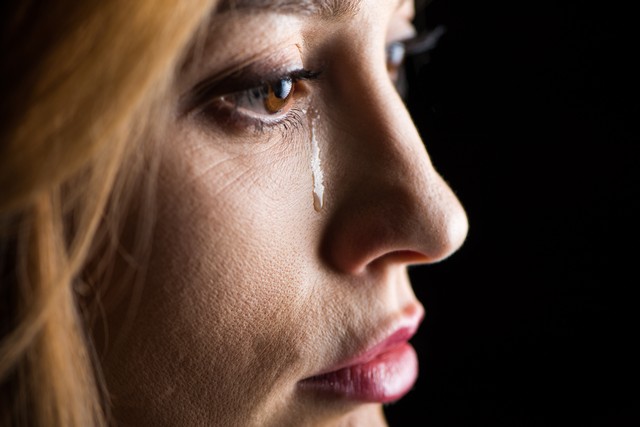
Does Mold Cause Depression?
Recently, the news reported about an eight year old boy, William Hewlett, that begged his parents to kill him after he started suffering from a brain disorder they fear may have been triggered by mold. According to the article, this young boy developed Pediatric Acute-onset Neuropsychiatric Syndrome (PANS) which is caused when an infection triggers a misdirected immune response resulting in brain inflammation. One of the suspected causes is environmental factors, like mold. William’s mother, Johanne Hewlett, suspects that mold may be the cause because tests showed that her son had high levels of mycotoxins in his system.
One of the symptoms that William displayed was a complete lack of willingness to live, he was extremely depressed. According to Dr. Mary Ackerley’s article, The Brain on Fire: The role of toxic mold in triggering psychiatric symptoms, people feel depressed when exposed to mold because toxins released by mold, mycotoxins, pass directly into the brain
This is the reason that many people exposed to mold suffer from symptoms of depression:
- Difficulty concentrating, remembering details, and making decisions;
- Fatigue and decreased energy;
- Feelings of guilt, worthlessness, and/or helplessness;
- Feelings of hopelessness and/or pessimism;
- Insomnia, early morning wakefulness, or excessive sleeping;
- Irritability, restlessness;
- Loss of interest in activities or hobbies once pleasurable, including sex;
- Loss of pleasure in life;
- Overeating or appetite loss;
- Persistent aches or pains, headaches, cramps, or digestive problems that do not ease even with treatment;
- Persistent sad, anxious, or “empty” feelings;
- Thoughts of suicide or suicide attempts
The purpose of this article is to provide you with a basic understanding of scientific and anecdotal data linking mold with depression.
Similar Symptoms For CIRS and Depression!

Similar Symptoms For CIRS and Depression!
In 2015, Wonder Makers Environmental, created a website, www.moldsensitized.com, dedicated to creating a resource on mold. On their website, they have documented some interviews with mold survivors who suffered from Chronic Inflammatory Response Syndrome (CIRS).
One of the key conclusions that can be gained from these interviews: mold does have an impact on the brain. In the words of the survivors:
“My ears were ringing and it felt as if my head was about to explode.” (Sandy Wolfe: Mold Survivor)
“I had anxiety, brain fog, memory and cognition problems, difficult concentrating and speaking.” (Beth Jarret: Mold Survivor)
“I developed chronic headaches and migraines, fatigue, muscle weakness, dizziness, memory issues, and mood swings.” (Mary DeBoer: Mold Survivor)
“I had blurry vision, insomnia, rage, anxiety, panic attacks, ringing ears, twitching muscles, hallucinations, dizzinesss, and nightmares.” (Amy Nix: Mold Survivor)
“The first symptom that alerted me that something was wrong was the sensation of crawling on my skin along with ice pick/pinprick pain in random places. Shortly after, I noticed that I had the inability to recollect words, slurry speech, memory loss, and an overwhelming fatigue. Other symptoms included vision disturbances, irritability and severe depression.” (Hilesca Hidalgo: Mold Survivor)
“I had burning eyes, headaches, pain in my arms and legs, balance issues, impaired cognitive abilities, and vision issues.” (Kelli Hamilton: Mold Survivor)
All of these survivors suffered from a condition known as Chronic Inflammatory Response Syndrome (CIRS). Listed below are the 37 symptoms associated with CIRS.
- Fatigue
- Weakness
- Aches
- Muscle Cramps
- Unusual Pain
- Ice Pick Pain
- Headache
- Light Sensitivity
- Red Eyes
- Blurred Vision
- Tearing
- Sinus Problems
- Cough
- Shortness of Breath
- Abdominal Pain
- Diarrhea
- Joint Pain
- Morning Stiffness
- Memory Issues
- Focus/Concentration Issues
- Word Recollection Issues
- Decreased Learning of New Knowledge
- Confusion
- Disorientation
- Skin Sensitivity
- Mood Swings
- Appetite Swings
- Sweats (especially night sweats)
- Temperature Regulation or Dysregulation Problems
- Excessive Thirst
- Increased Urination
- Static Shocks
- Numbness
- Tingling
- Vertigo
- Metallic Taste
- Tremors
Comparing the list of CIRS symptoms with the symptoms of depression listed earlier, it is clear that there are many similar symptoms associated with both conditions. This is likely the reason why many people sick from mold are unable to get proper treatment because they are diagnosed with a depressive disorder as opposed to a health condition caused by exposure to mold.
The biggest challenge mold survivors face is the lack of empathy and knowledge from doctors who do not understand mold sickness. Tragically, some survivors are even told that their sickness is all in their head:
“The doctors told us there was nothing wrong with her as she lay screaming in pain, convulsing on the table. The next ER, at a different hospital told us the same thing. The specialist we were sent to said ‘There is nothing wrong with her, I’ve read the reports. I won’t see her until she has a neuro-psych work-up.” (Debra Rogers: Mold Survivor)
Brown University Study on Mold and Depression!
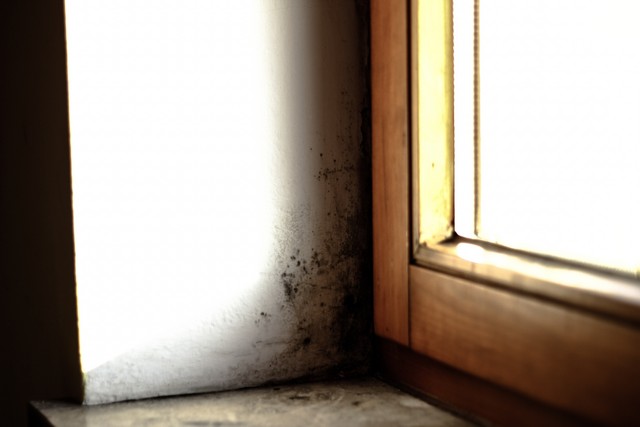
Brown University Study on Mold and Depression!
In 2007, researchers at Brown University released a study showing a link between mold and depression.
The study, led by epidemiologist Edmond Shenassa, analyzed data from 5,882 adults in 2,982 households.
The data was collected by the World Health Organization in 2002 and 2003. Interviewers visited 1000s of homes in eight European cities and asked residents a series of questions to assess symptoms of depression, including symptoms of low appetite, self-esteem, and sleep disturbances. They also tried to visually verify the presence of mold by looking at spots on the wall and ceilings.
What they found was that symptoms of depression were up to 40% higher for residents living in visibly moldy households than for residents that did not have mold in their homes.
Based on this survey, they concluded that there is a definite connection between damp, moldy homes and depression.
The studies author, further concluded that:
“Physical health, and perceptions of control, are linked with an elevated risk for depression, and that makes sense. If you are sick from mold, and feel you can’t get rid of it, it may affect your mental health. Healthy homes promote healthy lives.”
Despite the findings of this study, many in the scientific community consider this an anecdotal study because the researchers did not take actual air samples or swab samples of the suspected visual mold. Because of this, the conclusions of this study have been questioned.
Scientific Data Linking Mold With Depression!
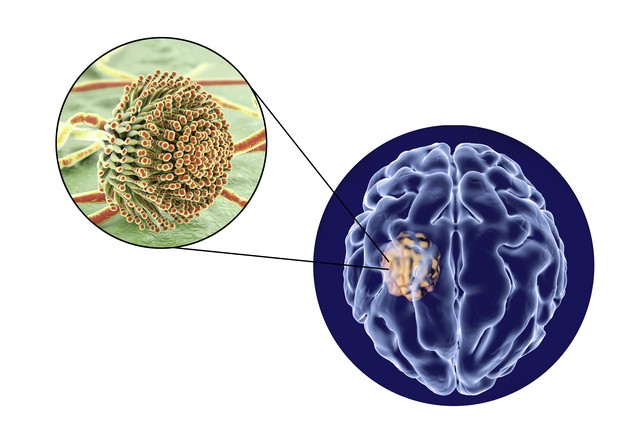
Scientific Data Linking Mold With Depression!
In her article, The Brain on Fire: The role of toxic mold in triggering psychiatric symptoms, Dr. Mary Ackerley explores the scientific research linking mold with brain disorders, including depression.
Unfortunately, one of the common symptoms of depression is suicide. As stated by Ackerley:
“I have patients who will walk into moldy places and their first sign that something is wrong is that they start thinking about suicide. I see that fairly frequently.”
According to Ackerley and other experts she cites, people feel depressed when exposed to mold because toxins released by mold, mycotoxins, pass directly into the brain.
Mold enters the body through the nose and eyes via the olfactory neurons which directly communicate with the brain.
Once the toxins enter the brain, it causes neuroinflammation which has a negative impact on the frontal cortex of the brain, the pleasure center that rules emotion, leading to depression.
Since Ackerley and other scientists believe that mold can cause depression, they have developed treatment protocols that focus on detoxing the patient.
The first step before treatment is to verify if mold is in fact the cause of sickness, which is accomplished through blood tests and the visual contrast sensitivity test developed by Dr. Shoemaker.
The second step is to begin the detox process. Ackerley has successfully used the drug cholestyramine (CSM), to reduce symptoms by up to 75%, provided the patient removes themself from the toxic environment.
She also recommends her patients to adopt a low carb and low sugar diet and the addition of supplements such as fish oil, magnesium, turmeric, probiotics, and vitamin D.
Mold Does Affect Your Brain Causing Depression!
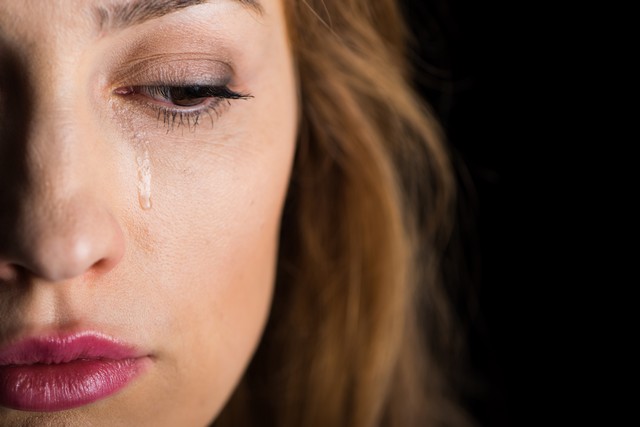
Mold Does Affect Your Brain Causing Depression!
According to Ackerley, the prevalence of mold induced depression could be quite high:
“One fascinating thing I’d like to point out: Dr. Shoemaker has often said that it’s about 25% of the population is susceptible to biotoxin-associated illness. When you add up who’s been diagnosed with a psychiatric illness, it too adds up to about 25% of the population. Is that a coincidence? Perhaps. But it’s a very interesting coincidence to me.”
With respect to the evidence linking the relationship between mold and depression, it is quite clear that mold does affect the brain and this is confirmed by scientific data, further strengthened by the anecdotal data offered by the Brown University study and the mold survivors who have come forward and documented their symptoms.
How prevalent is mold sickness? According to Dr. Scott McMahon, MD, who appeared in the MOLDY documentary:
“Possibly every doctor…is treating mold illness, and they just don’t realize it.”
If you suffer from depression, here are two questions that you need to ask:
- How healthy is the air quality of my home?
- Does my home have mold?
Got Mold Questions?

Got Mold Questions?
If you suspect that your depression is caused by poor indoor air quality and mold, contact Mold B Gone so that we can do a formal mold inspection and indoor air quality tests. Peace of mind is just a phone call away, 470-545-4467!
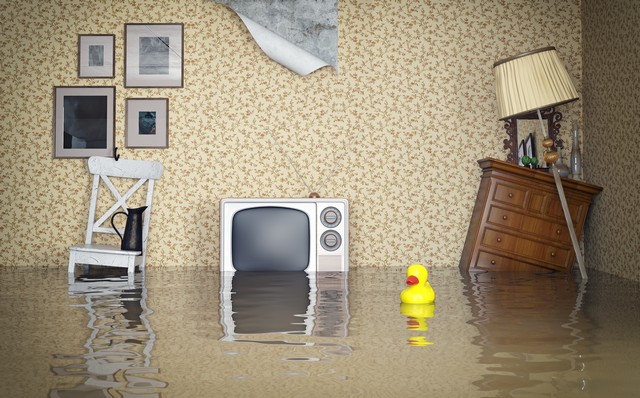
by Eric Brown | Dec 1, 2017 | Flood, Flood Clean Up, Flood Damage Mitigation, Flood Damage Restoration, Flood Damage Restoration Atlanta, Health, Homeowner Tips, How Toxic Is Mold?, Indoor Air Quality, Killing Mold, Mold and Asthma, Mold and Chronic Fatigue Syndrome, Mold and Depression, Mold and Multiple Sclerosis, Mold and Parkinson's Disease, Mold and Sinusitis, Mold Facts, Mold Information, Property Damage Restoration, Questions and Answers, Toxic Mold, Water Damage Cleanup, Water Damage Prevention, Water Damage Restoration, Water Damage Restoration Atlanta
Why Should I Get My Home Or Business Dried Professionally After Water Damage?
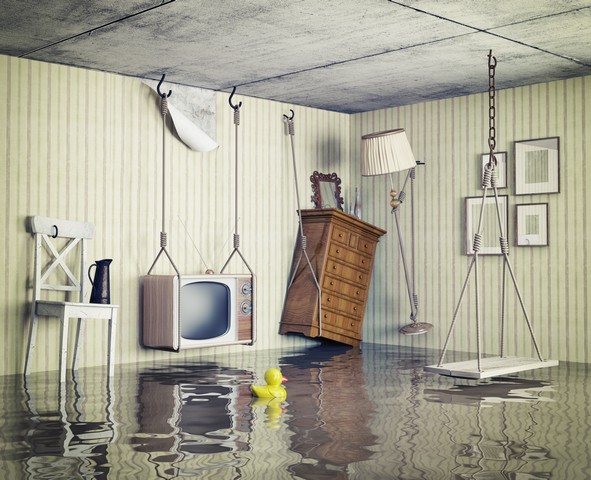
Why Should I Get My Home Or Business Dried Professionally After Water Damage?
One of the services that Mold B Gone specializes in is water damage restoration. We offer this service because the biggest concern that you should have if your home floods or a washing machine hose bursts or one of the pipes burst is mold prevention. Keep in mind, mold will begin growing within 24 to 48 hours, so it is very important that the moisture in your home or business is controlled.
Unfortunately, when people suffer water damage to their properties, they tend to think they can manage the concern themselves using a shop vac and bleach to disinfect.
The temptation to do the job yourself is strong because of the perceived cost savings. However, as this article will explain, there are nine critical reasons you should call a professional to manage the water damage concern in your home or business.
It is not just about saving a few bucks but ensuring that the moisture problems are properly dealt with to avoid future mold concerns.
#1 It May Look Dry, But There Is Still Moisture!
Water always takes the path of least resistance, flowing to the lowest point on your property. Even so, you can’t always know where moisture will hide. Cracks and crevices, cavities in walls and above ceilings, layers of flooring, and all other sorts of places hide water. However, without proper training, without meters to measure the moisture or infra-red cameras, you won’t be able to find all the places water lingers.
This is just another reason to hire Mold B Gone to get your home or business dried professionally because we locate all the hidden water damage – before it becomes a health threat.
#2 Water Weighs Alot!
One gallon of clean water weighs 8.34 pounds.
In a flood damage situation, the hundreds of gallons of water invading your property likely contains contaminants. That makes it even heavier. Once you’ve filled your shop vac with 3-5 gallons of dirty water, you have to get rid of it.
Now imagine lifting and carrying that water-filled bucket weighing 25 to 42 pounds up your basement stairs. Repeatedly!
Don’t risk a back injury just to save a buck, call a professional who has specialized equipment that can remove the water at a much faster speed so that commercial drying equipment and dehumidifiers can be deployed to dry out and remove as much moisture as possible. Again, the major concern of Mold B Gone is to prevent the onset of mold.
#3 Prevent Mold and Bacteria Growth!

Prevent Mold and Bacteria Growth!
The biggest health threat after water damage is mold and bacterial growth.
While your home or business will eventually dry out, moisture left inside the walls or under floors starts to grow mold in as little as 24 hours. And mold can damage your family’s or employee’s health for a very long time.
Mold exposure has been linked to:
- Chronic Fatigue Syndrome
- Asthma
- Sinus Infections
- Parkinson’s Disease
- Multiple Sclerosis
- Depression
So don’t chance it! Prevent mold and bacterial growth in your Atlanta, Georgia region home or business with professional drying.
#4 There Are Contaminants In Flood Water!
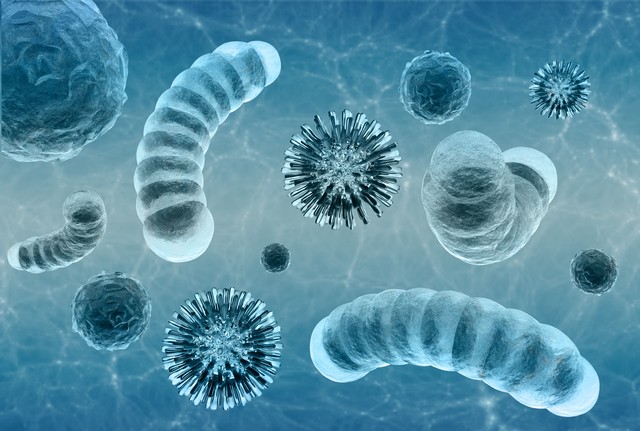
There Are Contaminants In Flood Water!
Over the ground flooding from storms carries with it a number of biological contaminants.
Don’t expose yourself to biological contaminants, call a professional that uses proper personal protective equipment.
Keep in mind, even if the water damage did not come from outside, clean water can still contain contaminants if it filtered through building materials.
The only way to determine how many contaminants are in the water is to take a sample and send it to the lab.
#5 We Maximize Your Claim Because We Will Take An Inventory And Photos Of The Contents!

We Maximize Your Claim Because We Will Take An Inventory And Photos Of The Contents!
We separate damaged items into categories of non-salvageable, salvageable, and questionable items. And, if need be, we pack-out and store your precious belongings for you to clean off-site until the water damage restoration is complete. Because we follow the best practices for water damage restoration, we keep costs down and salvage as much as possible.
#6 Mold B Gone Has Years Of Experience!
For most people, flood or water damage is a once-in-a-lifetime event.
Because of that, we know how devastating it is to see your office disrupted or your family’s possessions soaked and scattered.
But we do this work every day. We know how to make a difficult time easier for you. Our professional moisture removal methods work. We can replace do-it-yourself guesswork with our proven experience of years in the business.
#7 Our Goal Is To Save Your Possessions!
Materials and furniture exposed to flood water must be carefully evaluated. If you try to do this on your own, you may discard things that could be saved. Conversely, you may save things that absolutely must be discarded. Part of any professional water damage restoration process is evaluating your possessions. And we explain what’s safe to keep and what you need to discard.
And, for the contaminated items being disposed, we haul it away for you as part of the restoration service!
#8 We Know How To Work With Your Insurance Provider!
We use the latest water damage restoration estimating technology. That means we understand their language, and communicate with them to help resolve your insurance claim fast. If you’re a “do it your selfer,” this might be the best reason to get your property dried professionally.
When water damages homes and businesses, whether it’s from storm damage, over the ground floods, or leaking pipes, the time to act is now!
#9 Mold B Gone Uses Specialized Drying Equipment!
There’s nothing that you can rent from your local hardware store or borrow from your friend down the street that dries out your home or business like the equipment we have.
In a water damage emergency, you need industrial strength fans and dehumidifiers, placed in a very specific pattern for the most efficient drying environment.
Three Key Tips For Choosing A Water Damage Restoration Company!

Three Key Tips For Choosing A Water Damage Restoration Company!
- Look for industry experience and leadership.
- Evaluate their reputation of professionalism and customer service. Ask for referrals!
- Check to make sure you hire a company with certified technicians that have knowledge, training and experience to get your property dry fast.
Hiring a professional is the best thing you can do for your home and your family following a flood!
Have questions? Ready to hire a professional to help with your water damage repair? Contact us today to learn how we can fix up your water damage and get your home or business looking like new again. If you have questions, we’ve provided answers here in our post “15 FAQs About Water Damage Restoration!”.
Peace of mind is just a phone call away!
Remember, Mold B Gone is here to help. We provide water removal and other restoration services! Call us at 470-545-4467.

by Eric Brown | Nov 17, 2017 | 37 Symptoms Associated With Mold Illness, black mold removal Atlanta, black mold removal Georgia, Bleach and Mold, Can Black Mold Poison You?, Can Mold Kill?, Chronic Fatigue Syndrome (CFS), Chronic Inflammatory Response Syndrome (CIRS), Commercial Mold Remediation, Commercial Mold Removal, Crawlspace Mold, Dead Mold Spores, Health, Homeowner Tips, How Toxic Is Mold?, Indoor Air Quality, Killing Mold, Mold and Asthma, Mold and Chronic Fatigue Syndrome, Mold and Depression, Mold and Genes, Mold and Infants, Mold and Multiple Sclerosis, Mold and Parkinson's Disease, Mold and Pregnant Women, Mold and Sinusitis, Mold Facts, Mold Information, Mold Remediation, Mold Removal, Mold Sensitized Customer Testimonial, Mold Sensitized Success Story, Questions and Answers, Stachybotrys Black Mold, Toxic Mold
Got Mold & Health Questions? We Provide Answers To The 15 Most Asked Questions!

Got Mold & Health Questions? We Provide Answers To The 15 Most Asked Questions!
Mold B Gone has been helping residents in the Atlanta metropolitan area and surrounding Georgia states with mold removal since 2009.
During this period we have encountered many questions about mold and the impact it can have on health.
Listed below are the top 15 questions we have encountered with links to articles that provide detailed answers.
#1 Why is Stachybotrys Mold A Health Concern?
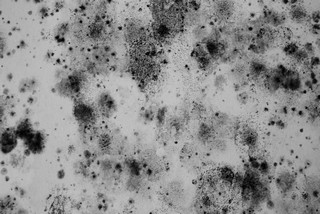
Why is Stachybotrys Mold A Health Concern?
You often hear about black mold in the media. Why is it such a big deal? Can black mold actually make you sick? This article explains why!
#2 Why Do Some People Get Sick From Mold And Others Do Not?

Why Do Some People Get Sick From Mold And Others Do Not?
The challenge mold poses is that it impacts everyone differently. This article explains why!
#3 What Is The Link Between Mold and Chronic Fatigue Syndrome?

What Is The Link Between Mold and Chronic Fatigue Syndrome?
Considering the similarity of symptoms between those suffering from ME/CFS and those suffering from CIRS, it is likely that many individuals diagnosed with ME/CFS may have been exposed to mycotoxins produced by mold growth. Learn more!
#4 Is Mold Sickness A Hidden Epidemic?
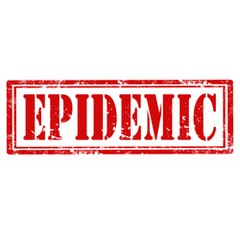
Is Mold Sickness A Hidden Epidemic?
Since so many health professionals are not aware of the health problems mold causes, many mold advocates believe that it is a hidden epidemic. In short, you could be sick from mold and not even know it. Learn more!
#5 Does Mold Cause Sinus Infections?
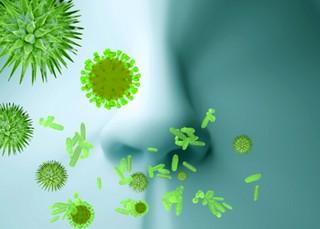
Does Mold Cause Sinus Infections?
Chronic sinusitis costs the health care system more than 8 billion dollars each year. The cause is most likely mold, meaning most of the treatments prescribed are not effective. Learn more!
#6 Could Some People Diagnosed With Multiple Sclerosis Actually Be Suffering From Mold Sickness?
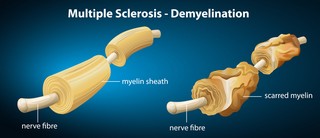
Could Some People Diagnosed With Multiple Sclerosis Actually Be Suffering From Mold Sickness?
Dr. Rick Sponaugle of the Florida Detox & Wellness Institute strongly believes that environmental factors, such as mold, could be a cause of MS because mold toxins destroy the myelin sheath on brain neurons, causing the classic white spots seen in MS. Learn more!
#7 How Do I Know If Mold Is Making Me Sick?
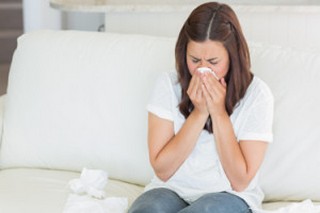
How Do I Know If Mold Is Making Me Sick?
Most people do not even know they are sick because of mold and or suffering from Chronic Inflammatory Response Syndrome (CIRS). Learn more!
#8 Are Dead Mold Spores Harmful?
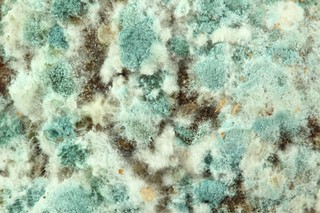
Are Dead Mold Spores Harmful?
There is a lot of bad information on the internet. One of the most prevalent myths is that you can kill mold. This article explains why this is not a good idea and why it can impact your health. Learn more!
#9 Why Does Mold Cause Depression?

Why Does Mold Cause Depression?
Doctor Ackerley believes there is a strong correlation between mold and brain health, particularly depression and suicide. Learn more!
#10 Does Mold Cause Parkinson’s Disease?
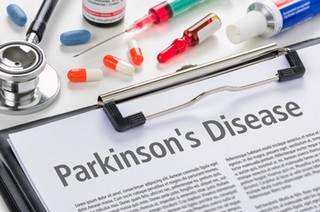
Does Mold Cause Parkinson’s Disease?
Recent research suggests that that biologic compounds such as mold have the potential to damage dopamine and cause Parkinson’s symptoms. Learn more!
#11 Why Is Mold A Health Concern?
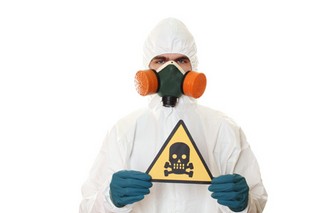
Why Is Mold A Health Concern?
Mold is nature’s recycler meaning it is designed to break down dead, organic material. Now, imagine, what happens when you have mold growing in your home. It is breaking down the material it is feeding on. Since we spend up to 90 percent of our time indoors this creates a situation ripe for health issues. Learn more!
#12 Does Mold Remediation Improve Health?

Does Mold Remediation Improve Health?
Yes, it does, this article cites a case study.
#13 Does Mold Cause Asthma?
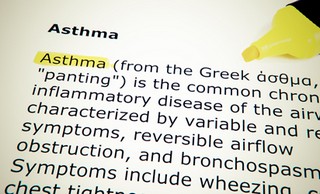
Does Mold Cause Asthma?
Four studies demonstrate a strong link between mold and asthma. Learn more!
#14 Does Mold Affect Pregnant Women and Infants?

Does Mold Affect Pregnant Women and Infants?
This is a difficult topic to research, but there is some evidence that mold could have an impact. Learn more!
#15 Can Mold Poison Me?
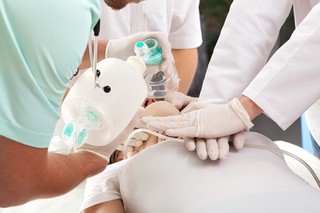
Can Mold Poison Me?
There is evidence that toxins and poisons released by growing mold can harm one’s immune system and cause severe sickness. Learn more!
Got Mold and Health Questions?
If you are concerned about mold and think that it may be impacting your health, please do not hesitate to contact us because we specialize in helping mold sensitized individuals. Our team of professionals looks forward to serving you. Peace of mind is just a phone call away, 678-697-6267!







































